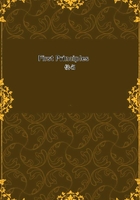
第198章
Writing in 1849 Sir John Herschel did not take account of the results reachedand verified during the few preceding years by Mayer and Joule, respectingthe quantitative equivalence between motion and heat. But accepting, as wemust now do, the conclusion drawn by Helmho1tz (§171) congruous withone previously drawn by Mayer, we are obliged to infer that stars movingat the high velocities acquired during concentration, will, by mutual arrest,be dissipated into gases of extreme tenuity constituting what we conceiveas nebulous matter. When we infer this the problem becomes different; anda different conclusion seems unavoidable. For the diffused matter producedby such conflicts must form a resisting medium, occupying that central regionof the cluster through which its members from, time to time pass in describingtheir orbits -- a resisting medium which they cannot move through withouthaving their velocities diminished. Every additional collision, by augmentingthis resisting medium, and making the losses of velocity greater must aidin preventing the establishment of that equilibrium which would else arise;and so must conspire to produce more frequent collisions. And the nebulousmatter thus formed, presently enveloping the whole cluster, must, by continuingto shorten the gyrations of the moving masses, entail an increasingly activeintegration and reactive disintegration of them, until they are all dissipated.*
Products of the kind implied are presented in the large diffused, andirregular nebulae, such as the one in Orion Sir John Herschel describes them(p. 650) as "very great in extent," "irregular and capriciousin their shapes," "no less so in the distribution of their light,"and not having "any similarity of figure or aspect." And then heremarks that "they have one important character in common" -- "theyare all situated in or near the borders of the Milky Way." That is tosay, they are found in that region of the heavens in which star-clustersalso are most abundant. Thus in their distribution and in their charactersthese nebulae are congruous with the supposition that they have resultedfrom dissipation of clusters arising in the way described.
What may we say concerning the future of one of these vast irregular nebulae?
The first remark is that as, in conformity with the foregoing speculation,it contains the matter not of one star but of many stars, so in conformitywith its aspect it is not a nebulous mass of the kind out of which a singlestar or sun originates: being so large that it covers numerous interstellarspaces. The second remark is that when its widest diffusion has been reachedconcentration will commence, and the implication is that after an immenseperiod a rotating nebula of one or other of the kinds so abundantly exemplifiedwill result. That a spiral nebula is produced by concentration of one ofthese vast diffused masses, containing the matter of many stars, is an inferencesupported by the fact that in some spiral nebulae many stars and nebulousstars embedded within the spiral structure have manifestly been formed orare forming while the general concentration is going on -- instance 74 Piscium,100 Comae, and M. 51 Canum Venaticorum -- and suggesting that a new concentratingcluster will eventually arise. If so, the implication appears to be thatthere will eventually again arise a process like that just suggested -- collisionsof concentrating masses and progressing diffusion until the nebulous formis again produced.
If in pursuance of this view we regard (1) the star-clusters variouslycondensed, (2) the diffused and irregular nebulae, (3) the spiral and othernebulae that are concentrating into star-systems, as exhibiting differentstages of the same process, then the implication is that in many thousandsof places throughout our Sidereal System there are going on alterations ofEvolution and Dissolution. And this conception may be taken as a sufficientanswer to the inference above drawn that equilibration must end in universaldeath -- a speculative demurrer to a speculative conclusion. §182b. There still presents itself the question which, unanswerablethough it may be, we cannot ignore -- What are we to think concerning thefuture of the visible Universe? To the conception of alternating evolutionsand dissolutions taking place in multitudinous different parts of it, theremust be joined the conception of it as either remaining in its present stateor as changing; and that rises the question -- Changing towards what otherstate? That its state must change is clear: the irregular distribution ofit being such as to render even a temporary moving equilibrium impossible.